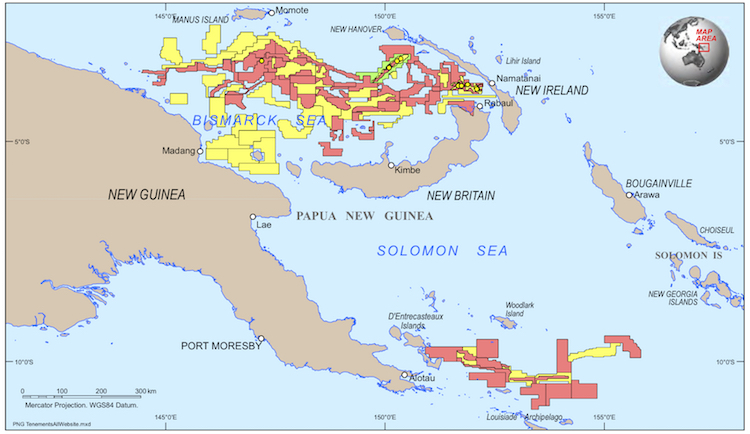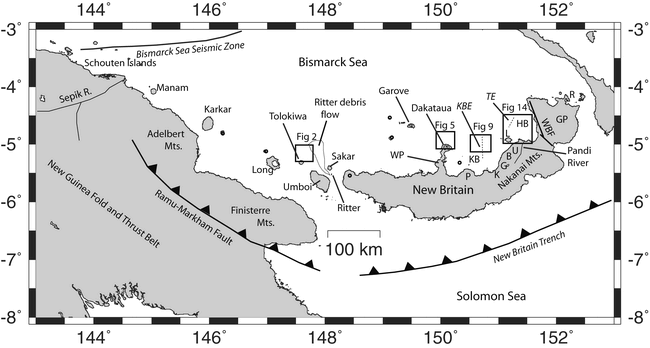
As much as half of the whole of Papua New Guinea could be impacted by potentially destructive experimental seabed mining operations.
While a lot of attention has been focused on the small area between East New Britain and New Ireland, known as Solwara 1, where Nautilus Minerals intends to start mining the seafloor in 2018, the Canadian company has far grander plans for experimental seabed mining and has recently been joined by the Chinese government in searching large areas of our sea floor.
Nautilus’ exploration activities include the whole of the Bismarck Sea and parts of the Solomon Sea, as shown in the map above (credit: Nautilus Minerals). Areas indicated in red are where the company already holds exploration licences. Areas in green show exploration licences being transferred to Nautilus and areas in yellow are where Nautilus has applied for an exploration licence.
In addition, the Chinese government is currently surveying the New Britain Trench looking for potential seabed mining sites. The Trench is situated in the Solomon Sea between New Britain and Bougainville as shown in the map below (credit: Geological Society of America).

In combination, experimental seabed mining could potentially directly impact the lives of over 3 million people living in East Sepik. Madang, Manus, East and West New Britain, New Ireland, Morobe, Oro and Milne Bay Provinces and the Autonomous Region of Bougainville.
Nautilus is currently struggling financially, has been forced to stop machine development, lay off staff and close offices, but the threat of experimental seabed mining, whether by Nautilus, another mining company or the Chinese is still very real.
The potential impacts of seabed mining are still not fully known but they could be devastating for PNG with people’s lives and livelihoods potentially impacted across ten Provinces and untold damage to our economically important tuna stocks and marine ecosystems.
- ACTNOW's blog
- Log in to post comments
